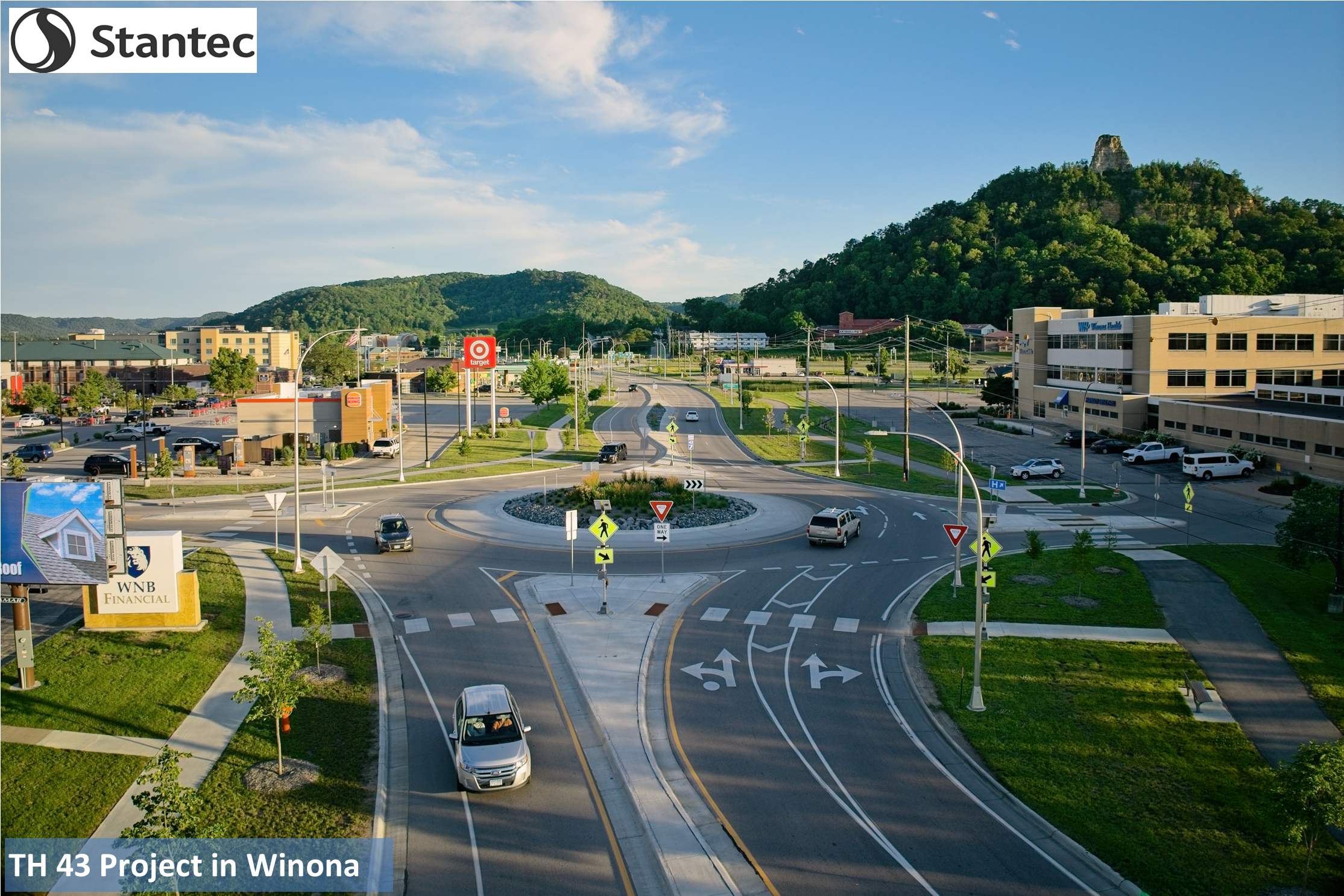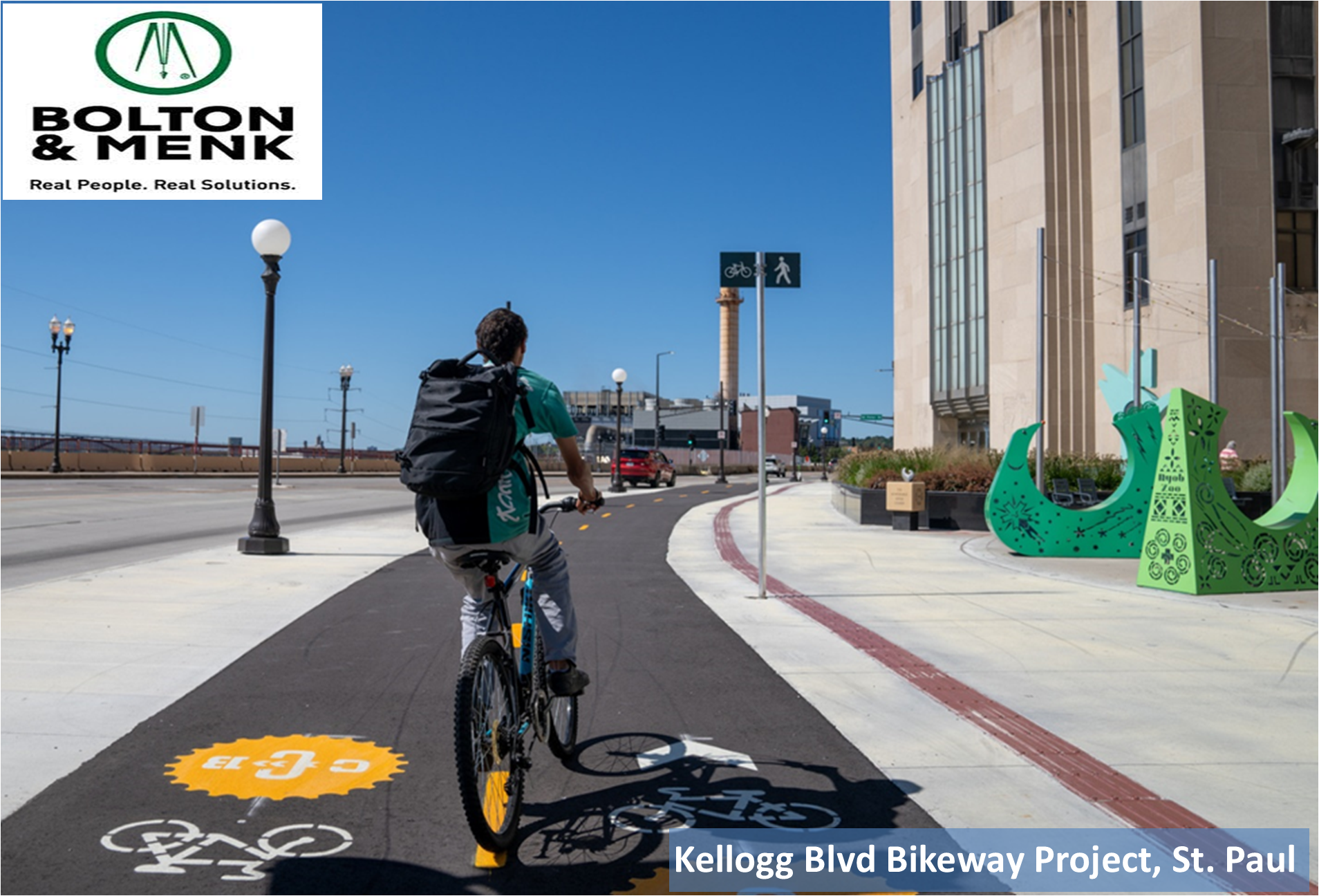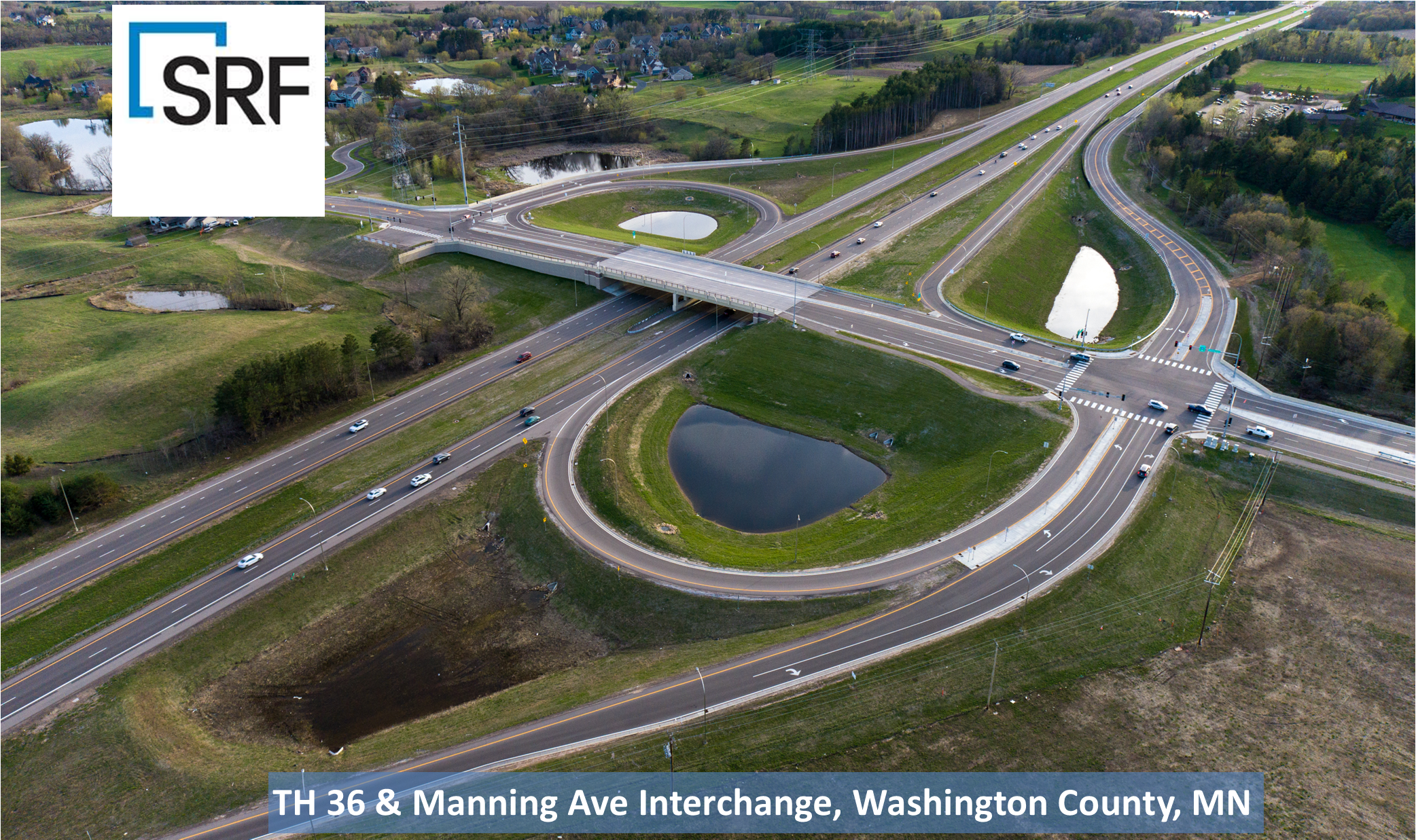
TH 43 Improvements
With equal parts technical expertise, community engagement, communication, and creative problem solving, the TH 43 project in Winona transformed the busiest street in the city into a safer, more efficient transportation experience. Nearly 23,000 vehicles use the corridor each day making its aging infrastructure and inadequate access control a high priority concern for Minnesota Department of Transportation (MnDOT) and the City of Winona. The intersection with TH 61 was especially problematic with 120 crashes reported over the past 10 years making it the intersection with the second highest crash cost of any intersection in southeastern Minnesota. Stantec used Vissim software to simulate two possible solutions, one exploring new traffic signals and the other adopting a series of roundabouts with both incorporating new pedestrian, bicycle, truck, transit, and passenger vehicle traffic. This was one of the more extensive applications of Vissim for a corridor-level analysis in Minnesota. The model helped compare the performance of different alternatives and ultimately illustrated the benefits of roundabouts over signals in terms of safety, efficiency, and multimodal accommodation. The model also helped identify potential issues and optimize the design parameters such as lane widths, turning radii, pedestrian crossings, and signage. Combined with an extensive public engagement plan, the model helped persuade the adoption of a four-roundabout corridor design for TH 43 that stretches from Sugar Loaf View to Belleview Street. Teamwork and proactive public engagement kept this project on schedule for the benefit of thousands of residents, commuters, and business owners. Careful planning kept local shops open while also guaranteeing 24-7 access for the regional hospital and emergency service vehicles.

St. Paul Kellogg Bikeway Improvements
The City of Saint Paul’s Capital City Bikeway (CCB) Network Study identified Kellogg Boulevard as the southern leg and major bikeway of the downtown bikeway network. Saint Paul broke the Kellogg Boulevard into three segments with the first segment running from St. Peter Street to Jackson Street, where the bikeway connects to the Jackson Street CCB constructed in 2016-17. Phase 1 had a construction budget of $6.6 million and included reconstruction of the roadway, construction of landscaped medians, installation of the two-way bikeway, increased pedestrian access, upgraded traffic signals, and utility relocations.
Bolton & Menk was hired by the city to provide preliminary and final design services for this federally funded project with engagement and coordination with multiple agencies—including MnDOT—for the future Robert Street (TH 3) turnback project. The project team partnered with several local firms to manage and coordinate various aspects of the project. Under Bolton & Menk’s lead, the project team was able to work through conceptual alternatives on a truncated timetable. Throughout, the project team worked with various city departments including public works and parks and recreation to obtain consensus on landscaping and maintenance plans. They also coordinated with MnDOT’s Cultural Resources Unit and the State Historic Preservation Office to provide a design that meets the multimodal goals of the city while maintaining the historic nature of the Saint Paul City Hall and Ramsey County Courthouse, while designing a separated bikeway facility that continues precedents set with the Jackson Street CCB with advances in the design of bikeways to meet current standards and guidelines.
In 2023, the first segment reached substantial completion and now includes a wider sidewalk, a two-way separated bikeway, and new trees and landscaping along the north side of the corridor thanks to a reduced number of travel lanes and narrowed medians. This also provides a shortened crossing of Kellogg Boulevard along the corridor. This project provides a new bike facility through downtown Saint Paul and new connection to three other separated bikeways along Jackson Street, Minnesota Street, and Wabasha Street; as well as a heightened sense of the city’s priorities, giving more space to pedestrians, bicyclists, and green space.

TH 36 Manning Ave. Interchange



